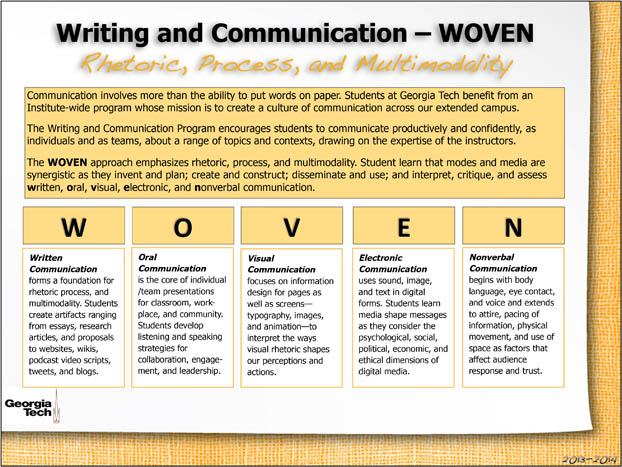Communication is Rhetorical
Rhetoric (a discipline dating to ancient Greece) investigates ways that people make what they write, say, or design persuasive for a particular audience in a particular situation. Rhetorical elements such as audience, context, purpose, argument, and evidence inform all effective persuasion.
Questions such as these help communicators to craft effective rhetoric:
- Who are my audiences?
- What prior knowledge does a particular audience have?
- What are the contexts in which readers, listeners, and viewers will be using my document (or presentation or visual)?
- What purposes do I have, and what purposes do my audiences have?
- What argument am I making?
- What’s the most compelling evidence I can use, given the attitudes and needs of my audiences?
- What’s the most effective way to organize information?
- What visuals will work, given the audiences and purposes?
- How does the design influence the ways that audiences access, understand, and use the information?
- What conventions should I use for written, oral, visual, nonverbal communication?
Communication is Multimodal
Rather than focusing solely on written communication, as many traditional English departments do, the Writing and Communication Program at Georgia Tech emphasizes that communication is multimodal, or WOVEN: Written, Oral, Visual, Electronic, and Nonverbal.
Whether people are working individually, collaboratively, domestically, or internationally, a WOVEN approach to communication emphasizes ways to create and integrate ideas in multiple modes and in multiple media (face to face, print, digital). A WOVEN approach does not attempt to isolate these modes and media; instead, it focuses on the ways that different modes and media are woven together in our daily lives and in the work world.
W – Good writing is a cornerstone of effective multimodal communication. The equally important flipside of writing is reading–that is, interpreting and using the texts others write.
O – Oral communication includes giving individual and team presentations as well as listening and responding to the presentations of others. It also involves various kinds of collaboration: participating in, facilitating, and leading meetings, groups, and teams.
V – Visual communication involves designing and interpreting visuals for documents, websites, and presentations.
E – Effective communicators must be competent in using existing electronic/digital media and in using new media as they emerge and evolve.
N – Nonverbal communication (for example, facial expression, eye contact, body language, vocal expression, spatial distances, clothing, pause time and pacing) can convey credibility and cultural sensitivity.

